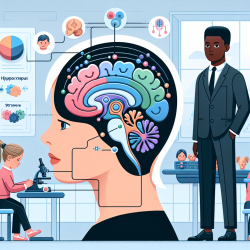Introduction to Children's Exposure Assessment
In the realm of speech-language pathology, understanding the environmental factors that influence children's health is crucial. The research article "Children's exposure assessment: a review of factors influencing Children's exposure, and the data available to characterize and assess that exposure" provides invaluable insights into how practitioners can leverage data to make informed decisions.
Key Findings from the Research
The study highlights several critical areas where data is currently insufficient to adequately assess children's exposure to environmental contaminants. These include:
- Identification of appropriate age/developmental benchmarks for categorizing children in exposure assessments.
- Development and improvement of methods for monitoring children's exposures and activities.
- Collection of activity pattern data for children, especially young children, required to assess exposure by all routes.
- Collection of data on concentrations of environmental contaminants, biomarkers, and transfer coefficients for use in aggregate exposure models.
Implementing Research Outcomes in Practice
For practitioners, integrating these findings into daily practice can significantly enhance the quality of care provided to children. Here are some actionable steps:
- Adopt Data-Driven Approaches: Use data to inform decisions about therapy and interventions. Understanding exposure levels can guide the development of personalized treatment plans.
- Engage in Continuous Learning: Stay updated with the latest research and methodologies in exposure assessment. This will help in adopting new strategies that are evidence-based.
- Collaborate with Environmental Experts: Work alongside environmental scientists to better understand the data and its implications for children's health.
- Advocate for Improved Data Collection: Encourage the collection of more comprehensive data on children's exposure to environmental contaminants to reduce uncertainty in exposure assessments.
Encouraging Further Research
The study underscores the need for further research to fill the existing data gaps. Practitioners are encouraged to participate in or support research initiatives aimed at enhancing the database for children's exposure assessments. This can be achieved by:
- Participating in research studies or surveys.
- Contributing to data collection efforts in clinical settings.
- Collaborating with academic institutions or research organizations.
Conclusion
By implementing the outcomes of this research, practitioners can improve their skills and contribute to better health outcomes for children. Data-driven decisions not only enhance the quality of care but also ensure that interventions are tailored to the unique needs of each child.
To read the original research paper, please follow this link: Children's exposure assessment: a review of factors influencing Children's exposure, and the data available to characterize and assess that exposure.










